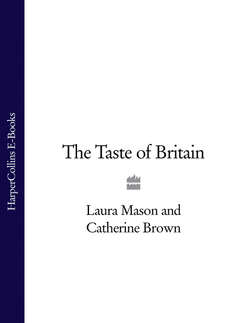Читать книгу The Taste of Britain - Hugh Fearnley-Whittingstall - Страница 199
HISTORY:
ОглавлениеHigh bush blueberries, Vaccinium corymbosum, are related to the native British bilberry (Vaccinium myrtillus) and flourish in similar conditions. A precedent for the use of blueberries was well established in hill and heathland areas of the British Isles, where the inhabitants were accustomed to using wild blaeberries or bilberries in various sweet dishes. In Scotland, in the hills of Angus and Perthshire, blaeberries were picked by itinerant travellers who used a wooden device which they combed through the small bushes to extract the berries. These they sold in towns and villages to be eaten with cream, used for jam, or made into pies. Since the wild berries are time-consuming to gather, fruit-farmers have been experimenting with the alternative high bush blueberry.
This was developed in New Jersey, USA in 1920, putting to good use acid, boggy soils which had previously been thought worthless for growing. They have been grown in Britain since the 1930s. The first edition of Law’s Grocer’s Manual (c. 1895) mentions ‘swamp blueberries’, which grew on bushes up to 6 feet (2 metres) high, so it is possible that the British growers were aware of this type of plant some decades earlier but no evidence for their cultivation has been found. According to grower Jeremy Trehane, the bushes with which his family began production were offered free to British growers by a Canadian university in the 1940s. Cultivation has spread to other places in the lowland heath areas of the southern counties of England. In Scotland the berries were originally developed at the Scottish Crop Research Institute at Invergowrie as an alternative to blaeberries.
